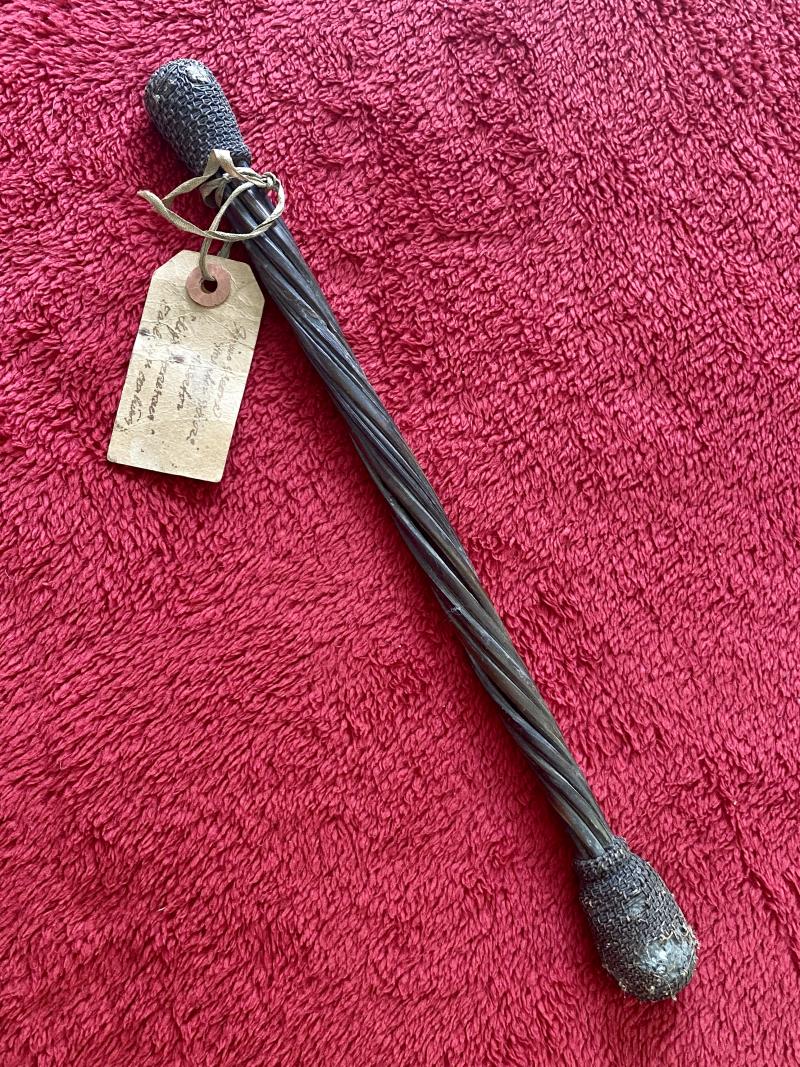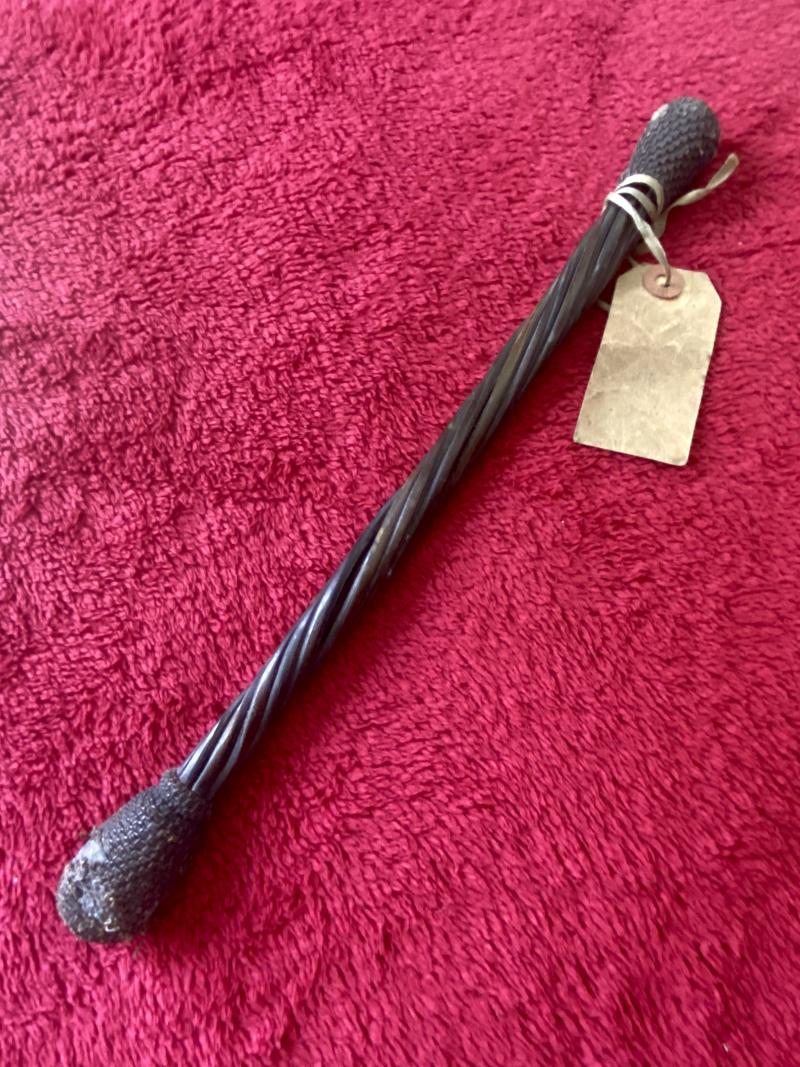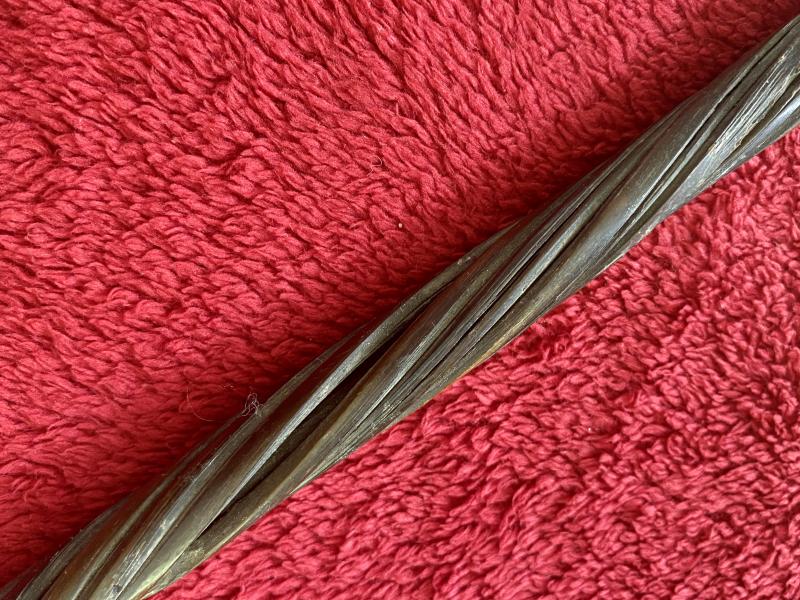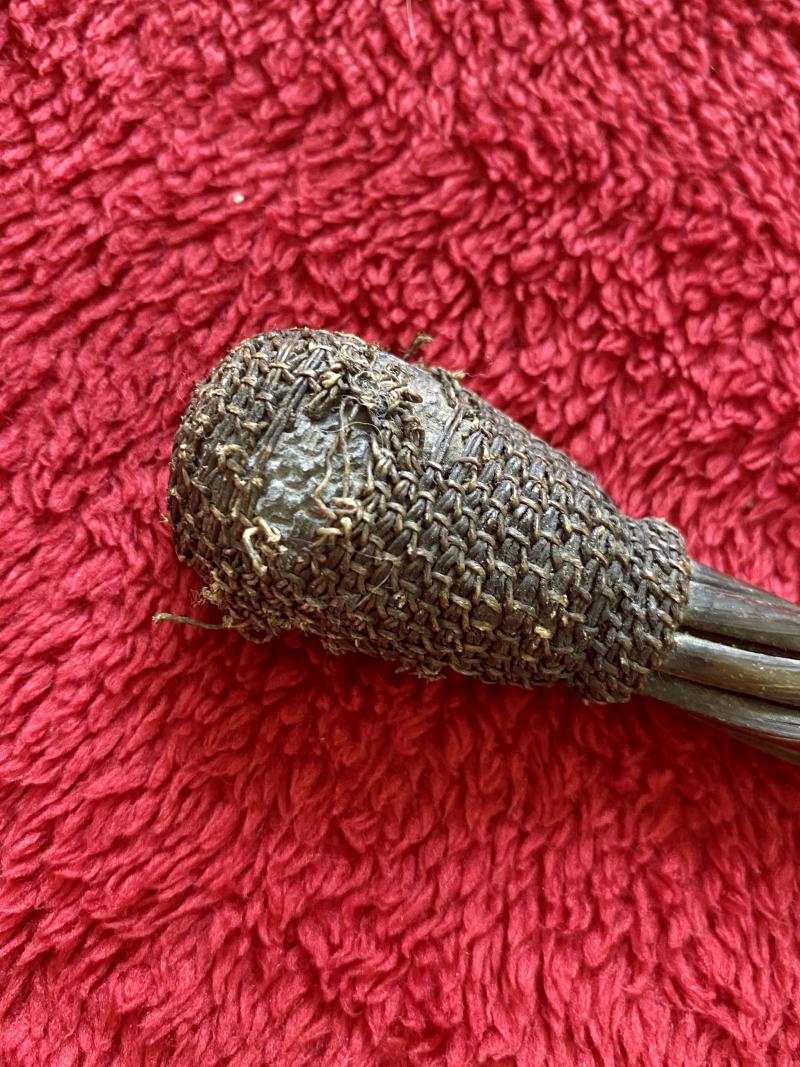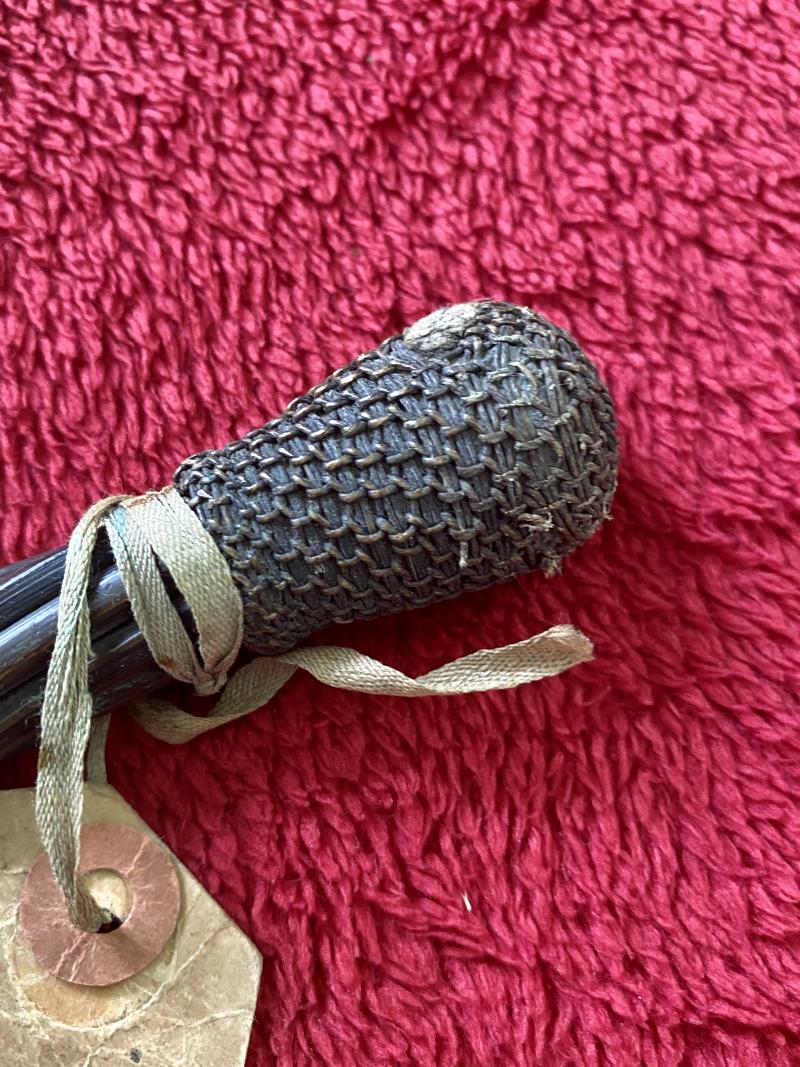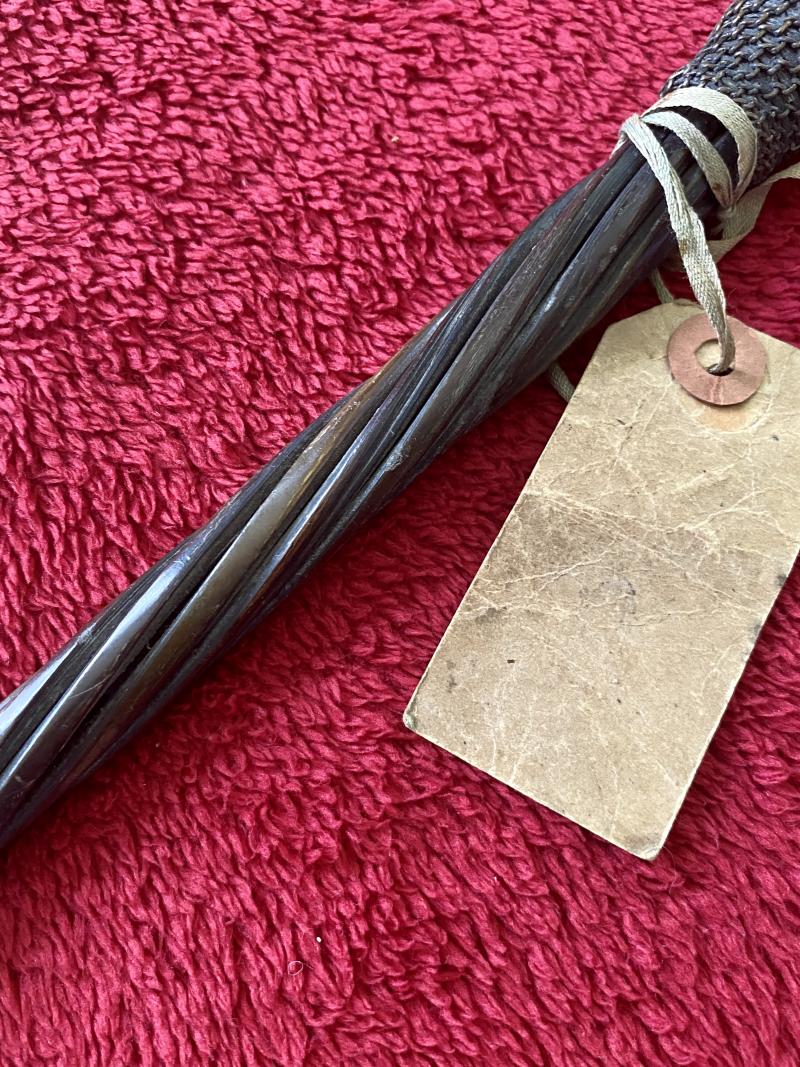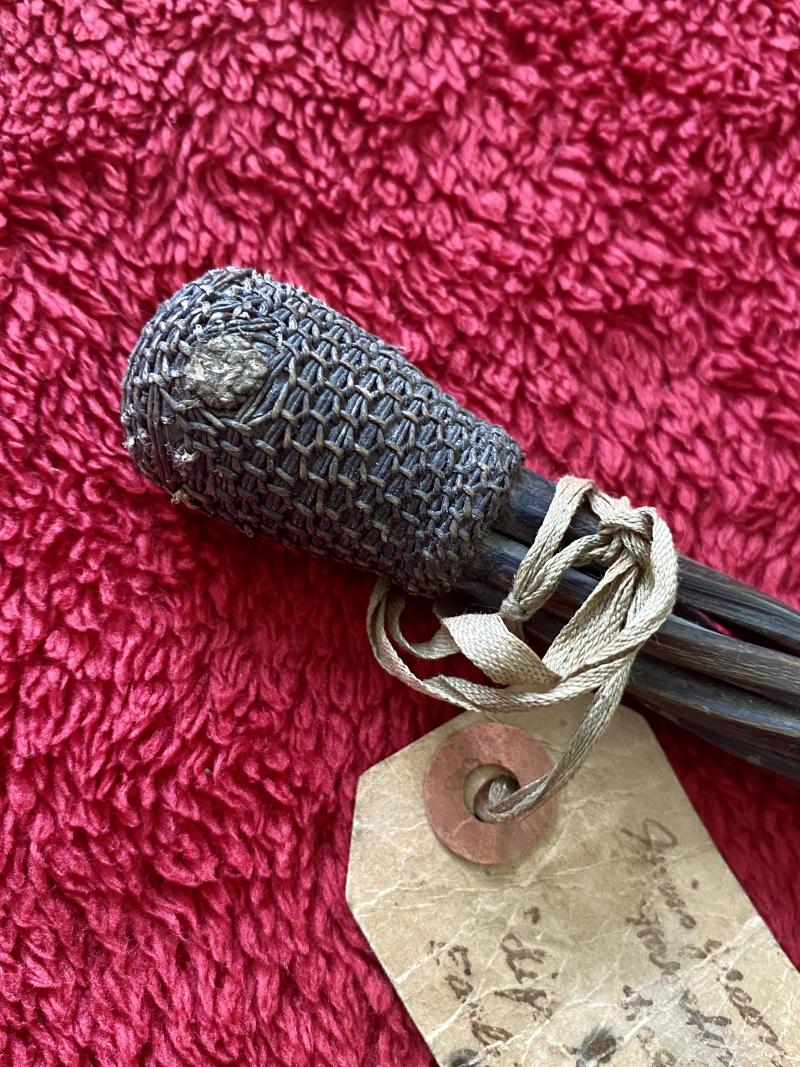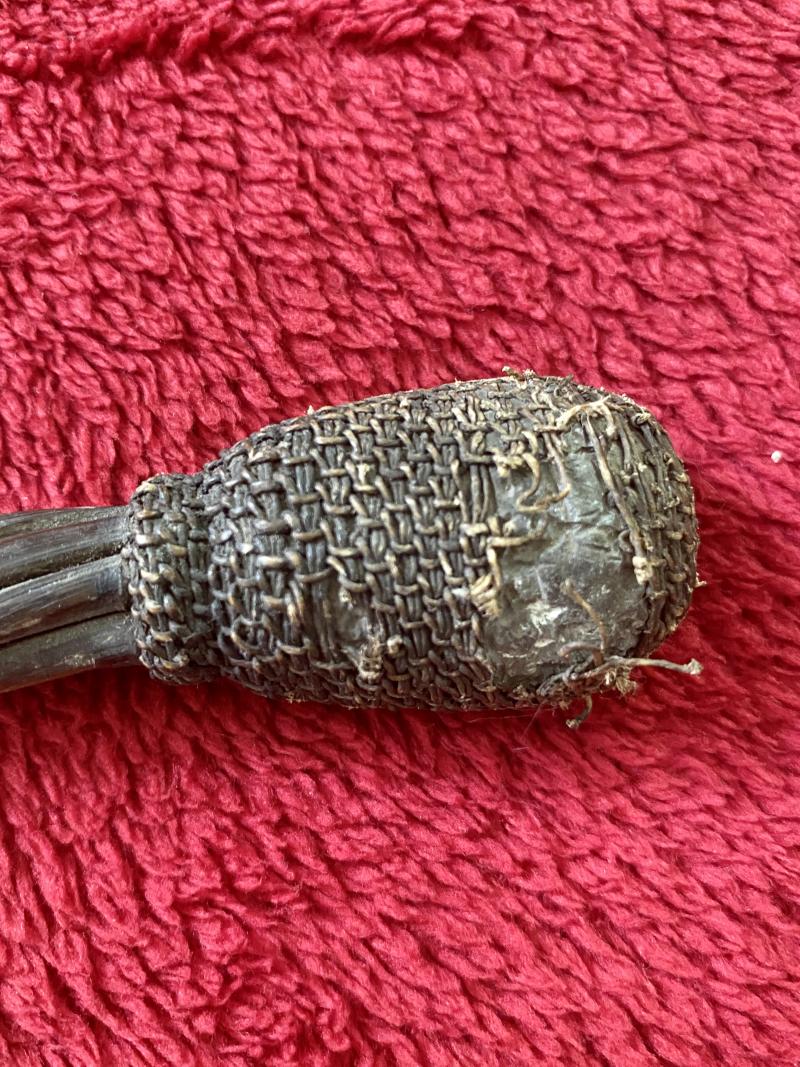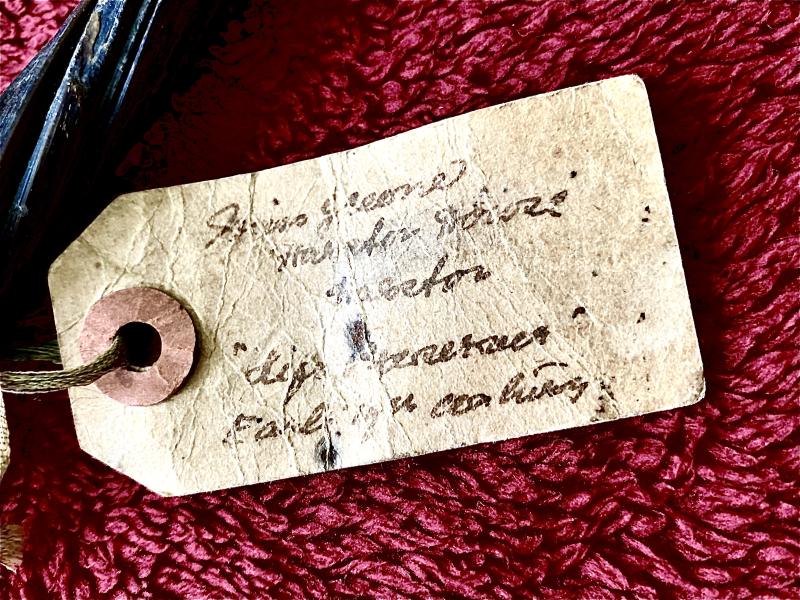Original Napoleonic Era British Royal Navy Whalebone & Lead Bosun’s Cosh circa 1800
Here on offer is a rare early 19th century Royal Navy weapon known as a “bosun's cosh”.
It consists of a metal shaft that is bound in twisted whalebone (baleen) with weighted ends made of lead that are covered in twine knot work.
Baleen is a whale product best known for its use in ladies’ corsets where it is usually referred to as ‘whalebone’.
This term is not strictly correct, as the material is not bone but keratin (which fingernails and hair are made of) that baleen whales have in their mouths for sieving their diet of small crustaceans.
It was a useful material as it was flexible but went out of use as whales became scarcer because of over hunting.
Back in the early 19th century, a bosun or boatswain was a petty officer and supervisor of the deck crew; assigning tasks, overseeing compliance, and acting disciplinarian, doling out whacks and angry words to sluggish workers to keep them on their toes.
The boson's cosh, fittingly known as a "starter" or "persuader," in conjunction with harsher floggings, were used to maintain order and fast paced work.
When ashore, the cosh was carried by press-gangs to forcibly take men back to the ships to serve as sailors. Kidnapping sailors was known as "impressment" or "shanghaiing," since these ships were often on the way to Shanghai.
Impressment was commonly practice by English crews and the Georgian Royal Navy and sanctioned by British courts. Coshes intimidated and beat the unwilling men back to the ships, and in more dramatic instances, the cosh knocked the men unconscious to be carried back to the boat; waking up far out at sea with no means of escape.
By the mid-19th century, a system of fixed terms gave the Royal Navy enough recruits that press-gangs were no longer as necessary and fortunately brutal beatings aboard ships were much less common as the public view of corporal punishment became much more negative.
This fine genuine example shows wear and loss of the twine at one end, I imagine through use!
The whalebone, baleen is in excellent condition and there is a slight cut-out area where I think a leather hand loop would have been attached originally.
I think this may have been on display in a museum during its life as it still has a very early paper tag attached, that has some hand writing but it has faded over the years and is almost illegible. I can just make out what I think is “ships persuader” and “early 19th century”.
The cosh measures 12.5” (32cm) long and weighs 220g.
Please see my pictures for the details of the condition, which complement this description.
Please see my TERMS OF BUSINESS regarding Deliver Charges and Insurance regarding additional insurance cover, should you require it, BEFORE the item is dispatched.
The responsibility lies with the customer to check with your Customs restrictions that this item can be imported into your country.
Thanks for taking the time to look.
Code: 50964
195.00 GBP

